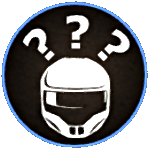Overview
This guide is intended to help new players understand basic and advanced controls in Vector36, and how the craft responds to input.
Introduction
“Understanding the Controls and Controllers” part of a series of guides intended to provide new pilots with a path to mastery.
Vector36 has a steep learning curve, but once you understand how the races are organized, get comfortable with the interface and learn how to pilot and modify your skimmer, playing Vector36 can be a deep and rewarding experience.
Please leave a comment if you have feedback. I’d like this guide to be helpful for as many players as possible.
Is there another guide you would like to see? Let me know!
Controls and Controllers
Skimmers in Vector36 use simulation style controls, so being familiar with how your craft specifically responds to input is paramount.
Vector36 is playable with a wide range of controllers, but it’s best experienced with a HOTAS (Joystick/Throttle). It also supports simultaneous input from multiple devices, allowing players to augment their SIM setup with rudder pedals, Track IR and more.
If you’re having trouble piloting your skimmer at first, play through the game’s tutorial a few times. It does a good job at introducing the controls and capabilities of a skimmer.

Understanding how the craft responds to input is useful when you’re trying to engineer a more effective skimmer.
Definition: The term ‘Vector’ refers to the positional thrusters on your craft.
Rudder input is optional and disabled by default. To use your Rudder, you must use the crafts ECU to program the input for the appropriate Lift vectors.
Thrust controls how much power is pulled from the Power Diverter. This power is then divided between Lift and Thrust Vectors as determined by the Bias control.
Binding Thrust to an analog control allows you to adjust your Power Diverter’s total energy output. This is useful at high power levels, when pushing too much power through your Lift Vectors is likely to burn them out.
Binding Thrust-Forward to a button allows the pilot to easily engage full engine power, even if the throttle slider is at a lower stage.
By regulating your Bias, a pilot can use their Boost to increase the force of either their Thrust Vector (increasing speed), or their Lift Vectors (increasing turning force)
Boost generates significant heat. If your craft’s radiators cannot compensate, this can result in skimmer damage and a forced shut-down.
Boost consumes fuel. If you run out of fuel during a race, your skimmer will slow to a crawl.
Binding Bias to an analog control allows you to adjust your power balance during a race, effectively trading off between speed and maneuverability as-needed.
Because of a skimmer’s close proximity to the ground and the importance of navigating over or around frequent obstructions on the track, the first person camera is the most effective way to race.
The chase camera is better used to check on damage and repair status after a crash.
Have you been successful with an alternative control setup? Tell us about it in the comments!



